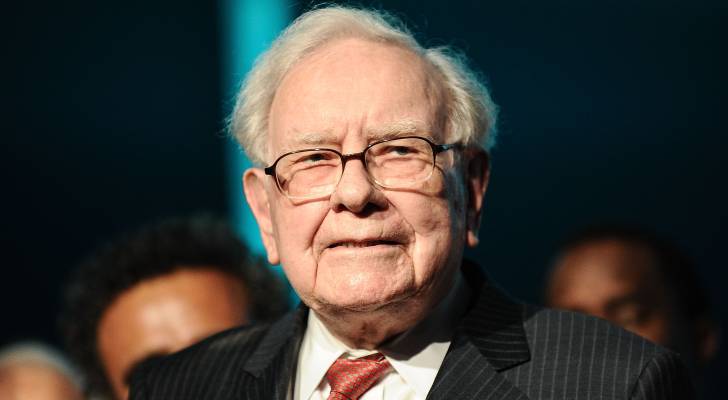
We adhere to strict standards of editorial integrity to help you make decisions with confidence. Some or all links contained within this article are paid links.
Momentum in U.S. stocks just keeps building, with the S&P 500 recently hitting fresh record highs.
Yet despite the market euphoria, one criterion — popularized by none other than Warren Buffett — is flashing red.
The Buffett Indicator measures the total U.S. stock market capitalization against the country’s GDP — essentially gauging if there’s a potential bubble, similar to the 1999 dot-com bubble: Once it burst, it cost investors around US$5 trillion (C$7 trillion) total. Buffett once called the indicator “probably the best single measure of where valuations stand at any given moment.”
In a 2001 reflection on the crash, Buffett offered a simple guide: “If the percentage relationship falls to the 70% or 80% area, buying stocks is likely to work very well for you. If the ratio approaches 200% — as it did in 1999 and a part of 2000 — you are playing with fire.”
These days the Buffett Indicator hovers around a whopping 217% (1), topping the dot-com surge when it sat at 140%.
It may help explain why Buffett’s appetite for U.S. equities has cooled. Berkshire Hathaway has been a net seller of equities for 11 straight quarters and, as of June 30, was sitting on a massive US$344 billion in cash.
The blunt reality is that stock market gains have outpaced America’s economic growth by a wide margin. And while Buffett admits the ratio “has certain limitations,” many agree U.S. stocks look stretched.
According to a recent Bank of America survey of fund managers, 91% believe U.S. stocks are overvalued — the highest reading in data going back to 2001.
Against this backdrop, some investors are bracing for what comes next. Legendary investor Jim Rogers says he’s sold all his U.S. stocks recently, warning he’s “seen this party before.”
If you’re concerned about where markets might head, here are two potential ports in the storm.
A “very effective diversifier” for bad times
When Rogers revealed he had sold his U.S. stocks, he also shared where he’s turning for safety — precious metals.
“I own a lot of gold and silver,” he admitted.
Gold and silver have long served as classic hedges against inflation. Unlike fiat currency, precious metals can’t be created at will by central banks. And because their value isn’t tied to any single country, currency or economy, investors often turn to them during periods of market turbulence and geopolitical uncertainty.
Rogers isn’t alone. Ray Dalio, founder of the world’s largest hedge fund, Bridgewater Associates, told CNBC earlier this year that people “don’t have, typically, an adequate amount of gold in their portfolio,” adding “When bad times come, gold is a very effective diversifier.”
One way to invest in gold that also provides significant tax advantages is through gold stocks, ETFs or bullion.
Build your own investment portfolio with CIBC Investor’s Edge online and mobile trading platform and enjoy low commissions.
Gold stocks and ETFs allow investors to hold physical gold or gold-related assets within a Tax-Free Savings Account (TFSA) or a Registered Retirement Savings Plan (RRSP). This investment approach leverages the tax advantages these plans offer with the potential protective benefits of investing in gold, making it an option for those looking to help safeguard their retirement savings against economic uncertainties.
Passive income, even in a down market
Like stocks, real estate has its cycles, but it doesn’t rely on a booming market to generate returns.
Even in an economic downturn, high-quality, essential real estate investment can continue to produce passive income through rent. In other words, you don’t have to wait for prices to rise to see a payoff — the asset itself can work for you.
In fact, Buffett has often pointed to real estate as a prime example of a productive, cash-flowing asset. In 2022, he stated that if you offered him “1% of all the apartment houses in the country” for $25 billion, he would “write you a cheque.”
Of course, you don’t need billions — or to even buy a property — to benefit from real estate investing. Crowdfunding platforms offer an easier way to get exposure to this income-generating asset class.
Crowdfunding allows you to invest in shares of rental homes with a nominal fee — without the hassle of ongoing property maintenance and repairs or managing difficult tenants — so you can reap the benefits of property ownership.
Another option is to track and find the trends among various alternative investment asset classes, including real estate. precious metals and resources. A good option is a membership in The Motley Fool (TMF). Through TMF, members get expert investment guidance, which helps you build a robust portfolio. To get the latest stock pics, current stock market news, as well as insight into investing basics and more technical strategies, check out The Motley Fool Canada.
Article sources
We rely only on vetted sources and credible third-party reporting. For details, see our editorial ethics and guidelines.
CNBC: ‘Buffett Indicator’ for stock valuation passes 200%, beyond level he once said is ‘playing with fire’ (1)
This article provides information only and should not be construed as advice. It is provided without warranty of any kind.